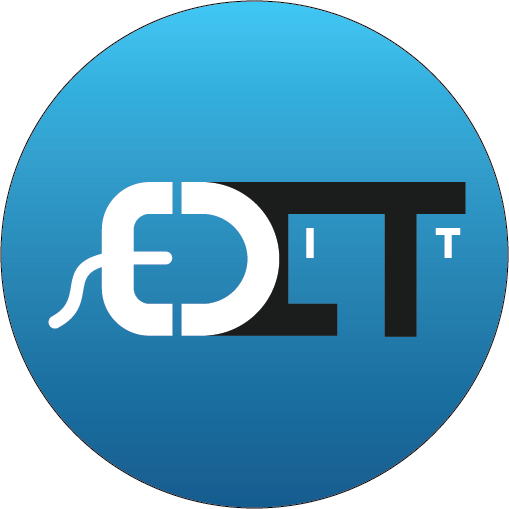| Mitigation | Coverage |
| Restrict web-based content | 7 |
| Disable or remove feature or program | 5 |
| 5 | |
| Network segmentation | 5 |
| User training | 5 |
| Application isolation and sandboxing | 4 |
| Exploit protection | 4 |
| Network intrusion prevention | 4 |
| Privileged account management | 4 |
| User account management | 4 |
| Antivirus/antimalware | 3 |
| Data backup | 3 |
| Filter network traffic | 3 |
| Password policies | 3 |
| Update software | 3 |
| Account use policies | 2 |
| Audits | 2 |
| Encrypt sensitive information | 2 |
| Execution prevention | 2 |
| Limit access to resource over network | 2 |
| Vulnerability scanning | 2 |
| Application developer guidance | 1 |
| Code signing | 1 |
| Restrict file and directory permissions | 1 |
| Threat intelligence program | 1 |
Finally, Table 3 ranks control recommendations based on the product of the depth (frequency) and breadth (coverage) of the controls, which we’ve named the arbitrary effectiveness coefficient. This is intended to incorporate both coverage and frequency to provide a more balanced prioritization.
| Mitigation | Arbitrary Effectiveness Coefficient |
| Data backup | 1.26 |
| Network segmentation | 0.85 |
| Restrict web-based content | 0.85 |
| Application isolation and sandboxing | 0.68 |
| Exploit protection | 0.68 |
| Privileged account management | 0.68 |
| Disable or remove feature or program | 0.61 |
| Update software | 0.51 |
| Network intrusion prevention | 0.50 |
| User training | 0.43 |
| Filter network traffic | 0.38 |
| Antivirus/antimalware | 0.36 |
| Vulnerability scanning | 0.34 |
| Multifactor authentication | 0.29 |
| Execution prevention | 0.24 |
| User account management | 0.23 |
| Password policies | 0.17 |
| Code signing | 0.12 |
| Account use policies | 0.11 |
| Limit access to resource over network | 0.06 |
| Application developer guidance | 0.04 |
| Audit | 0.01 |
| Encrypt sensitive information | 0.01 |
| Threat intelligence program | 0.00 |
| Restrict file and directory permissions | 0.00 |
Using this more holistic ranking system, data backup remains at the top, followed by network segmentation and restricting web-based content. After that, application isolation and sandboxing, exploit protection, and privileged account management emerge as the next most effective controls.
Exploring Recommended Mitigations
For all of the convenience of this ranking method, however, some of recommendations in the ATT&CK framework are very broad and can take on many different forms. In addition, some controls that emerged with slightly lower rankings are more important than the tables make them look, given the broader context and some observations from breach data models used earlier. The following sections explore the recommended mitigations in greater detail.
Data Backup
With ransomware as common as it is, backing up data needs to be part of every organization’s strategy. However, this control objective can be implemented well or poorly, and it is often difficult to assess the robustness of a backup program until it is tested. Many good backup programs employ several different modes, with longer-term backups air-gapped, stored on physical media off-site, or using other similar degrees of protection. Keep in mind that backups are also useful in the event of a natural disaster as well as ransomware, so a production-ready backup outside of your region might be a good idea.
However, beginning in 2020, ransomware strategies evolved to exfiltrate data before triggering encryption, which reduces the power that even good backups have to completely control ransomware risk. Sure, with the right backups you can restore operations once you clean up your environment, but the data is gone and you still have to deal with the attacker and ransom in one form or another. As a result, the top billing that data backup receives according to the ATT&CK framework is valid, but doesn’t tell the whole story. A robust ransomware strategy needs to start with backing up but can’t end there. The preceding attacker behaviors, the methods of initial access, lateral movement, execution, persistence and exfiltration need to be controlled as well.
Application Isolation and Sandboxing
This primarily takes the form of various forms of virtualization, such as VMs, containers, and browser sandboxing. This type of control can help mitigate a number of exploit-based approaches observed in 2021, including Exploitation for Client Execution, Exploit Public-Facing Application, and Drive-by Compromise.
Exploit Protection
The most obvious form of exploit protection is the use of a web application firewall (WAF). Despite the declining prevalence of web exploits in the data, a WAF is still critical for operating a modern web application. It is also a requirement for the Payment Card Industry Data Security Standard (PCI-DSS), which applies specifically to one data type—credit card numbers—that has been so heavily targeted by formjacking attacks. A growing number of behavioral approaches to exploit protection also appear promising.
Network Segmentation
Network segmentation is perhaps the most underrated control in this list, given how ransomware approaches have changed the threat landscape since the pandemic began. This control objective can shut down a huge number of attack vectors, five of which were observed in the 2021 data: Exploit Public-Facing Application, Automated Exfiltration, Exfiltration Over Web Service, External Remote Services, and Exploitation of Remote Services.
Furthermore, since it is suspected that a large number of additional techniques went unreported in the examined breaches, particularly for ransomware and other malware attacks, network segmentation is important because it makes exfiltration and lateral movement particularly difficult. Architectural and consumption trends, such as digital transformation, may make segmented networks seem like a vestige from an earlier phase of on-premises computing, but this practice is more important than ever for the bulk of organizations. Some truly cloud-native applications may have implemented all of the same control objectives using identity and access management, and in these specific cases this control may not apply. But this is still an important approach for organizations with hybrid environments or legacy applications in the process of moving to the cloud.
Privileged Account Management
Managing credentials and identities for high-impact roles like administrators remains a core part of modern systems management. While creating privileged accounts is straightforward, deleting them is often overlooked, so privileged accounts should be audited regularly to ensure that they are decommissioned when no longer needed.
Update Software
This is a large topic, and one that the ATT&CK framework covers only briefly. However, the Log4Shell campaign that unfolded in late December 2021 reminds us of the importance of maintaining software, not merely the software organizations produce or use but all of the subcomponents and libraries necessary to keep everything running. Despite the comparatively low ranking here, updating software (and really all vulnerability management) must be a cornerstone of any contemporary security program.
Vulnerability Scanning
Vulnerability scanning is a core requirement for adding situational awareness and flexibility to a vulnerability management program. Organizations should scan regularly, preferably daily, and include both a public-facing scan from the Internet to assess how an environment appears to attackers as well as an internal scan to know the real scale of the problem.
Code Signing
Code signing is highlighted here despite its comparatively low ranking in the recommended controls because F5 Labs believes it is an underused approach. In particular, subresource integrity (SRI) headers can ensure that external scripts haven’t been modified when they are called at runtime. As more and more applications rely on external scripts to pull in new features, SRI is a powerful tool for shutting down a large number of vectors, including many of the initial access techniques seen in formjacking and Magecart attacks.8
Occasionally objections to SRI arise based on the fact that it can cause a feature to break. If the developer of the external script updates the code, the checksum will naturally fail, the application won’t load the script, and the feature will not function. However, security researcher Troy Hunt points out that scripts that are hosted at URIs with a version number in the path (his own example is https://cdn.report-uri[.]com/libs/report-uri-js/1.0.1/report-uri-js.min.js) won’t fall prey to this failure mode because when the script owner changes the script, the new script will be hosted at an entirely new path.9 While the downstream consumer of that script would need to change their source to update the script they’re calling at runtime, the feature in the application won’t break in the meantime—so SRI really is a powerful, free control for managing third-party subapplication dependencies. Owners of scripts that other applications consume should structure their servers to include version numbers as part of the path so that their consumers can use SRI to the maximum advantage.
Restrict Web-Based Content
This is a broad-reaching control objective that can manifest in many different ways, but all of them center on controlling avenues for both unauthorized access and exfiltration, such as blocking specific file types, known malicious IP addresses, external scripts, and the like. This approach has the potential to shut off a wide range of attack vectors, including malicious script injection, phishing, and “malvertising.”10
As with SRI in code signing, Content Security Policies (CSPs) appear underused for such a powerful and free control for restricting web content. In August 2021, F5 Labs ran a scan of the Tranco top 1 million sites that collected information about TLS implementation for the 2021 TLS Telemetry Report. This scan also collected HTTP response headers, which provides the opportunity to assess how organizations use CSP. 6.17% of sites had a CSP header in the server response. The most frequent directive in those CSPs was upgrade-insecure-requests, which ensures that cross-site requests travel over HTTPS (see Figure 23). Upgrade-insecure-requests showed up in about 2.5% of sites, followed closely by frame-ancestors. Several other elements that are more frequent vectors for injecting malicious scripts, such as script-src, img-src, and frame-src, are less common in CSPs.

